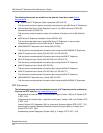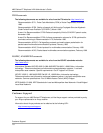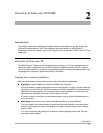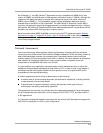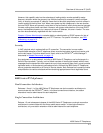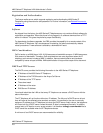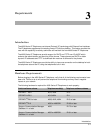
Overview of Voice over IP (VoIP)
Network Assessment
2-5
As of Release 1.1, the 4600 Series IP Telephones are fully compatible with SNMPv2c (a later
version of SNMP) and with Structure of Management Information Version 2 (SMIv2), although the
telephones will respond correctly to queries from entities that comply with earlier versions of
SNMP, such as SNMPv1. “Fully compatible” means that the telephones respond to queries
directed either at the MIB-II or the Custom MIB. The 4600 Series IP Telephone Custom MIB is
read-only (values therein cannot be changed externally via network management tools). Similarly,
although the 4600 Series IP Telephone’s MIB-II has read/write permissions in accordance with the
standard, any writes to MIB-II are ignored to improve security.
More information about SNMP and MIBs can be found in the IETF references listed in Related
Documents, on page 1-5. Appendix A, Avaya - 46xx IP Telephone MIB in this LAN Administration
Guide provides information about the Custom MIB, which is available for download in *.txt format
on the Avaya support website.
Network Assessment 2
The current technology allows optimum network configurations to deliver VoIP with perceived
voice quality close to that of the Public Switched Telephone Network (PSTN). Not every network is
able to take advantage of packet voice transmissions. Some data networks have insufficient
residual capacity for even compressed voice traffic. In addition, the usual approach to developing
data networks by integrating products from many vendors makes it necessary to test the
components for compatibility with Voice over IP traffic.
It is assumed that your organization has performed a network assessment (with or without the
assistance of Avaya) before attempting to install Voice over IP, in order to have a high degree of
confidence that the existing data network has the capacity to carry voice packet traffic and is
compatible with the required technology.
A network assessment would include a determination of the following:
A network audit to review existing equipment and evaluate its capabilities, including its ability
to meet planned voice and data needs.
A determination of network objectives, including the dominant traffic type, choice of
technologies, and setting voice quality objectives.
The assessment should leave you confident that the implemented network will have the capacity
for the foreseen data and voice traffic, and can support H.323, DHCP, TFTP, and jitter buffers in
H.323 applications.
It is important to distinguish between compliance with the minimal VoIP standards and support for
QoS, which is needed to run VoIP on your configuration.




